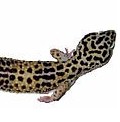Leopard geckos are incredibly territorial so it is highly advice against putting too many males in one tank. Reptiles are cold blooded which means they cannot control their body temperatures like a mammal can so they need heat in order to regulate their body temperatures. When it's winter time in the desert it can get really cold that usually forces them to hibernate. They are more active at night mainly for hunting purposes and sleep mostly during the day.
In the hot desert areas of Afghanistan, Southern Asia throughout Pakistan and the Northwestern regions of India; these are places leopard geckos originally called home. They really like dry moist places which makes perfect environment for all of them. Having eyelid is one of many things that make them incredibly unique. They are increasingly becoming more and more popular as pet, one for their ease to care for and their easy going attitude.
Leopard geckos go through the function of losing their skin once a month for adults and more frequent for hatch-lings. They also eat the skin which they shed which supply all of them with protein and nutrition. Calcium and vitamin d3 are incredibly important to their diets. But exactly how they get calcium and vitamin in the wild seem to be mysterious for probably the most part. It truly is unknown whether the amount of insects they eat for instance spiders, crickets, and moths support them get their vitamins along with nutrition. But it really is nearly impossible to duplicate the quantity of insects that they eat inside the wild therefore vitamins should be dusted on their most delicious preys.
They've got a sharp sense of smell to assist them look for food. Almost all leopard geckos in captivity are not going to feed on lifeless bugs for they desired to trap theirs. They are insectivores their diet include insects, worms, spiders and grasshoppers. Crickets are their favorite considering that they could hunt them even within their enclosures. When meals are lacking they have the potential to accumulate excess fat inside their tails which can be a incredibly beneficial feature to obtain ınside the wild.
Leopard gecko has the potential to remove their own tail off their body if in peril. They've got shorter legs which usually help when it comes the perfect time to flight. They can voluntarily drop their tail in the try to get away and support them escape much quicker. Their tail will certainly grow back again typically fatter than the initial one. In extremely rare cases the loss of their tail causes them to get ill and even kill. Regenerated tail will frequently hold their own color patterns and lack the rigid quality and shorter than the regular tail.
A leopard gecko has possible predators within the wild such as snakes, frogs, and foxes so their good sense of sight and hearing helps them avoid risky situations. Their wild and vibrant skin color facilitates to camouflage them from predators. The shedding of the skin also helps in the process this facilitates in the actual elimination virtually any odor left for predators to come across. They go below rocks, and burrows during the day not only to steer clear of the scorching temperature but in addition to stay away from possible predators.
I have come up with information or mini-course to get you commenced on swiftly and easily taking care of your own leopard gecko. It's created to instruct you just about all of the basics on acquiring, keeping, and breeding geckos of most varieties.
